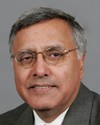Thank you very much, Mr. Chair.
I'm going to shoot into an eight- to ten-minute window.
I certainly am, with my colleague, pleased to be here with you today. Mr. MacDonald is my director of strategic policy and research.
I would first like to take a few minutes to talk about the conducted energy weapon and our role in providing advice to the Minister of Public Safety on this issue.
I certainly want people to note that while I'm concerned with the issue of the conducted energy weapon as it's used as a force tool, I in fact will refer to it as the taser, a brand name, during my address, just for the sake of ease of reference and of course based on the fact that the RCMP employs that particular model.
I would then like to turn to how the commission has historically addressed complaints and appeals related to specific instances where RCMP members have used the taser and some of the challenges we've experienced.
Finally, I would like to address systemic issues within the RCMP, as highlighted in my 2007 interim taser report.
In November of last year, the Minister of Public Safety approached the commission and requested a review of the RCMP's taser protocols, implementation, and compliance. This request was the first time, to my knowledge, in the commission's recent history that a minister solicited our advice and assistance on a policing policy issue.
The Commission for Public Complaints Against the RCMP was created by Parliament in October 1988. Historically, the bulk of the commission's work contains the intake of public complaints and the examination of appeals.
The government in fact recently provided the commission interim funding, which was used in part for the creation of a new strategic policy and research division. While focusing on our core business activities, the commission is now in a position to examine in greater depth systemic policing issues, and tasers are one example.
The value-added of the commission's involvement in such systemic policing matters is that we ask the questions that the police typically do not. This is not due to a singular unwillingness to address issues but because the commission, as a civilian oversight body, brings a different perspective to policing issues.
In looking at the issue of tasers, I want to be very clear. The taser is a pain-inducing weapon whose application to the human body, unlike a service handgun or baton, leaves very little residual evidence of use. The device causes intense pain.
Law enforcement and Taser International speak of the fact that the taser renders subjects incapacitated and unable to fight back. While this may be true, this is a thoroughly sanitized description of what happens to someone who is subjected to the taser. What is missing from the debate and what concerns the commission is that a pain compliance technique is being wholeheartedly advocated without a full appreciation of the impact on the human body or a full understanding of the circumstances in which RCMP members are using the device.
Despite my concerns about the inducement of pain, the commission recognizes that police work sometimes involves violent encounters with people in order to gain control of a situation. This reality must be situated within the broader context of public support, accountability, and transparency.
The commission is not at this time recommending a moratorium on taser use by the RCMP. Rather, it is our position that the use be restricted to only those situations where the individual is combative or poses a significant risk of death or grievous bodily harm.
There are numerous reviews and inquiries occurring across the country at this time on law enforcement's use of tasers. Our count is approximately 10. This indicates a serious public concern with this weapon.
The commission has been addressing the issue of taser use by the RCMP since its introduction in late 2001. We have received 144 complaints related to taser use, with an additional 21 appeals relating to the deployment or threat of deployment of a taser.
In the 21 appeals processed, the commission has made adverse findings in cases where members failed to properly assess the behaviour being presented to them and then inappropriately categorized the behaviour as more threatening than it actually was. This inappropriate categorization has the result of elevating the level of intervention beyond what was acceptable according to the RCMP's use-of-force model. This is the commission's main concern.
Since the introduction of the taser in 2001, the commission has seen a policy shift that allows for the use of the weapon in circumstances far less constraining than what was originally proposed. In addition, we have seen situations in which members have deployed the taser outside of the permissible usage scenarios provided for in policy. The commission refers to this expanded and less restrictive use as usage creep. It has resulted in cases wherein individuals who have exhibited behaviours that were clearly non-combative and that could not be classified as actively resistant have been tasered.
I'd like to point out that the commission only receives about one-half of all complaints lodged against the RCMP members annually, because you can file a complaint directly to the RCMP and they can make a resolution. Unless it's appealed, we wouldn't see it. My 144 number shows what we have received. It makes it difficult for the commission to fully appreciate the size and scope of any problem.
Additionally, the commission is aware that the public at large may not fully understand what their rights are with respect to filing a complaint or requesting an appeal. To address this issue, we are making community outreach a priority. We've in fact embarked on a quasi-internal audit of all RCMP-completed complaint records to determine whether complaints, especially use-of-force complaints, are being disposed of in an appropriate manner. We're doing that for the past calendar year.
I can tell you this. I have seen situations where use-of-force complaints, including improper use of tasers, have been informally settled by the RCMP. The thing is, if it's informally settled, the person is not advised of the right of appeal because they mutually agree, so we don't show up, or in some cases the complaint is withdrawn, so it doesn't show up statistically. This, in my view, is inappropriate, as use-of-force complaints are serious allegations and must be processed formally and include the right to seek review by the commission.
You'll note in the material that I think has been handed out to you the use-of-force model the RCMP uses. On it, you'll see our interpretation of where the taser is currently positioned, and you'll see examples of use and where the commission believes the taser should be situated.
For ease of comprehension, you can look at this as being the face of a clock that proceeds from one o'clock through to twelve o'clock. You start off with the least form of intervention, officer presence; moving to verbal interventions; to empty or soft hand, where you direct someone; then they can move to arm locks, at empty hard-hand control. You can have, as you move up, OC pepper spray, taser, batons. Of course, lethal force would be the use of a gun. Then you return, right back to the top of the clock again.
If you look at this particular diagram, you'll note the placement of the RCMP's new policy, which then was modified following our interim report of December 2007. It's at about seven o'clock on the dial. It says, “Previous RCMP policy”. You'll see where it is in terms of use-of-force intervention, and you'll see “Active” resistance and “Passive” resistance. Then you'll see, right above it, “Current RCMP policy”.
You'll notice that both boxes are attached to the same line. In other words, it's my belief that since receipt of my interim report, there has been little difference in the placement of taser use by the RCMP.
When you look at the document where it shows green over here, right after the blue, you'll see a green line. Those are examples, from there on, in which we have seen the taser deployed; in other words, immediately following a verbal intervention without recourse to any other technique. Even under RCMP policy it's supposed to be over here, after you've tried other techniques, such as soft-hand techniques. I've recommended that it be up here, almost about eight o'clock or nine o'clock on the dial, where it would be for a combat situation or a situation in which you would give consideration to using a baton. Instead, it is down here with a mix of other devices.
In my opinion, the RCMP has not gone far enough in implementing my first and second recommendations on where it be placed, and of course on the training and advice to members. This in fact is a significant issue for me.
Central to the debate of RCMP taser use is that employment should be based on the principle of proportionality. The amount of force used should bear some reasonable relationship to the amount of resistance the member is facing.
My interim report made a number of recommendations that encompass broadly three categories. First, the RCMP needs to coordinate and strengthen its efforts related to data collection and analysis of taser use. The RCMP needs to empirically justify policy shifts with respect to taser use, especially when that shift loosens the restriction on deployment.
Third, the RCMP needs to clarify to its members and to the public when it is permissible to deploy the weapon. The commission will release its final taser report in early June of 2008. It's important to know that the final report will not address the medical concerns surrounding taser use. We are cognizant of the wider medical debate, but the commission's mandate and expertise prohibit this kind of specialized analysis. And you'll see if you read the studies, they're all over the place.
Our final report will focus on the following: best practices of law enforcement both nationally and internationally; a comparative analysis across the country of other police forces and their placement of the taser in their use-of-force model; an in-depth analysis of RCMP taser usage reports; and of course the testimony we're hearing today. We'll be tracking that as well.
By the way, I want to underline that the RCMP's cooperation and openness with us have been commendable, both for the interim report and during this stage here, and that relationship is key to our being able to fulfill our mandate.




